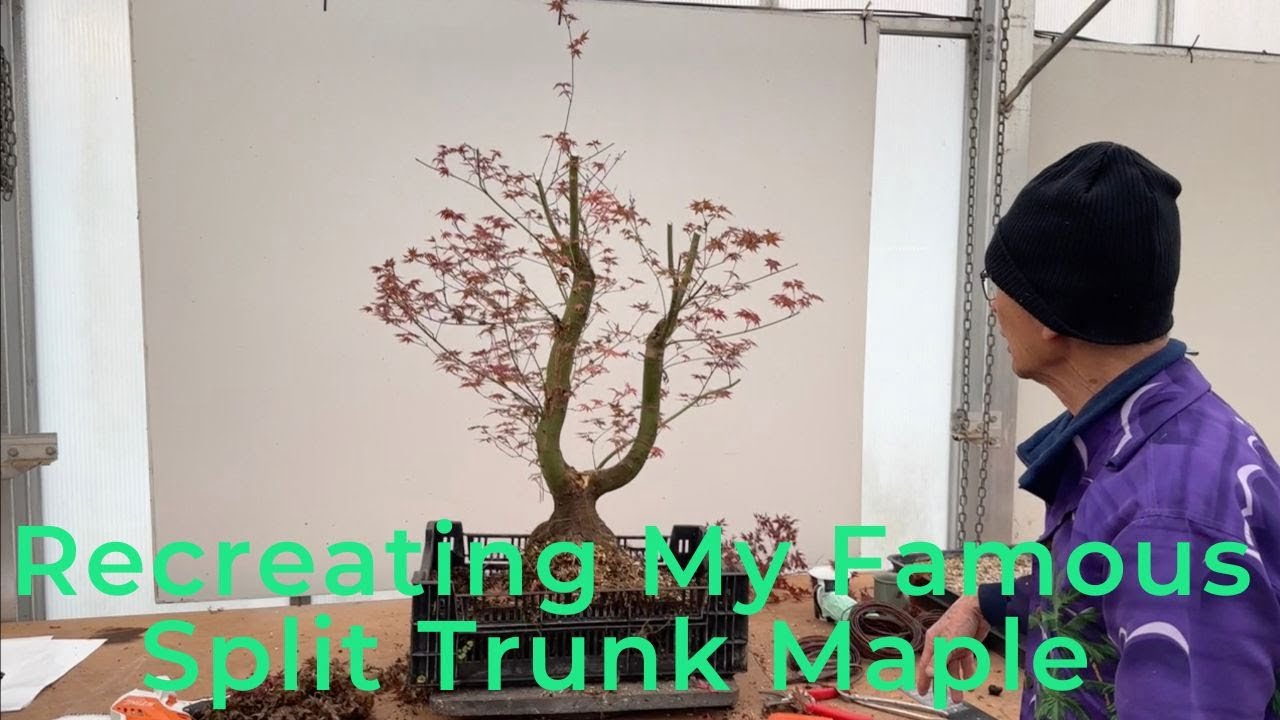Welcome to my latest blog post where I will share my experience of recreating one of my most popular maple trees – the Split Trunk Maple. This time, I have decided to use a Deshojo variety and I am excited to share with you the step-by-step process of how I did it. So, whether you’re a seasoned gardener or just starting out, join me on this journey to create a stunning Split Trunk Maple using a Deshojo. Let’s dive in!
Introduction
Bonsai is an art that involves growing and shaping miniature trees. It is a Japanese cultural tradition that dates back to the 6th century. Bonsai trees are grown in small containers and pruned and trained to take on the appearance of mature, full-sized trees. In recent years, bonsai has become increasingly popular worldwide. Herons Bonsai is one of the most famous bonsai dealers and suppliers in the UK. They also offer a ‘Bonsai Masterclass’ for those who aspire to become experts in this art form. In this article, I will show you the process of recreating my famous split trunk maple bonsai tree using a Deshojo.
Choosing the Right Bonsai Tree
When it comes to choosing a bonsai tree, the most important factor is to select a healthy tree that is suited to your level of expertise. Herons Bonsai offers a wide range of indoor and outdoor bonsai trees of different species, sizes, and ages. It is recommended to choose a younger and more flexible tree for beginners. For advanced learners, a more mature tree with a complex trunk and branches will give you a bigger challenge and more room for creativity.
Preparing the Container
Once you have selected your tree, you need to prepare the container. The container should be shallow and have drainage holes to allow the water to drain away. You should also add mesh to cover the holes to prevent pests from entering the pot. It is recommended to use bonsai soil, which is a mixture of soil, sand, and clay. You should also add small rocks or gravel to the bottom of the pot to assist with drainage.
Air Layering and Propagation
Air layering is a propagation technique used to create new trees from an existing one. It involves removing a section of bark and exposing the underlying tissue. By applying rooting hormone to the cut area and wrapping it with moss and plastic wrap, a new root system will start to form in a matter of weeks. The split trunk maple bonsai tree in the video has been propagated multiple times using air layering.
Styling and Shaping
Once you have prepared the container and propagated the tree, you can start to style and shape it. The split trunk maple bonsai tree is a famous creation of mine. It features a split trunk with multiple branches on either side. I remove any inward-growing branches to keep the tree’s shape symmetrical. To shape the branches, I use wire, which is wrapped around each branch and twisted into the desired shape. To trim the branches, I use an electric saw to ensure they grow in the right direction.
Maintaining the Tree
Bonsai trees need to be regularly maintained to ensure their health and longevity. This includes watering, fertilizing, pruning, and repotting. Watering should be done when the soil is dry, but not too frequently as this can lead to root rot. Fertilizing should be done during the growing season to promote new growth. Pruning should be done to maintain the tree’s shape and remove dead or infected branches. Repotting should be done every two to three years to ensure the roots have enough space to grow and develop.
Conclusion
Bonsai is a fascinating art form that requires patience, skill, and dedication. By following the steps outlined in this article, you can recreate your own split trunk maple bonsai tree using a Deshojo. Remember to choose a healthy tree, prepare the container properly, propagate the tree using air layering, style and shape the branches, and maintain the tree regularly. Bonsai is a lifelong learning experience, and with practice, you can become an expert in this ancient art.
FAQs
-
Can I create a bonsai tree from any type of tree?
Not all trees are suitable for bonsai. The best trees for bonsai are those that are naturally small and have fine branches. Some of the most popular species are junipers, pines, maples, and elms. -
How long does it take to create a bonsai tree?
Creating a bonsai tree is a long process. It can take several years to train the tree into the desired shape and size. However, the process is highly rewarding, and the tree can last for decades with proper care. -
Is it difficult to maintain a bonsai tree?
Maintaining a bonsai tree requires regular attention and care. However, it is not difficult if you follow the basic principles of bonsai care, such as watering, fertilizing, pruning, and repotting. -
How often should I water my bonsai tree?
The frequency of watering depends on the type of tree, the size of the container, and the environment. As a general rule, bonsai trees should be watered when the soil is dry but not completely dry. Overwatering can lead to root rot, while underwatering can cause the tree to dry out. -
Can I create my own bonsai tools?
It is possible to create your own bonsai tools using materials such as wire cutters, pliers, and wire. However, it is recommended to invest in high-quality bonsai tools, which are purpose-made for this art form and can last a lifetime with proper care.


